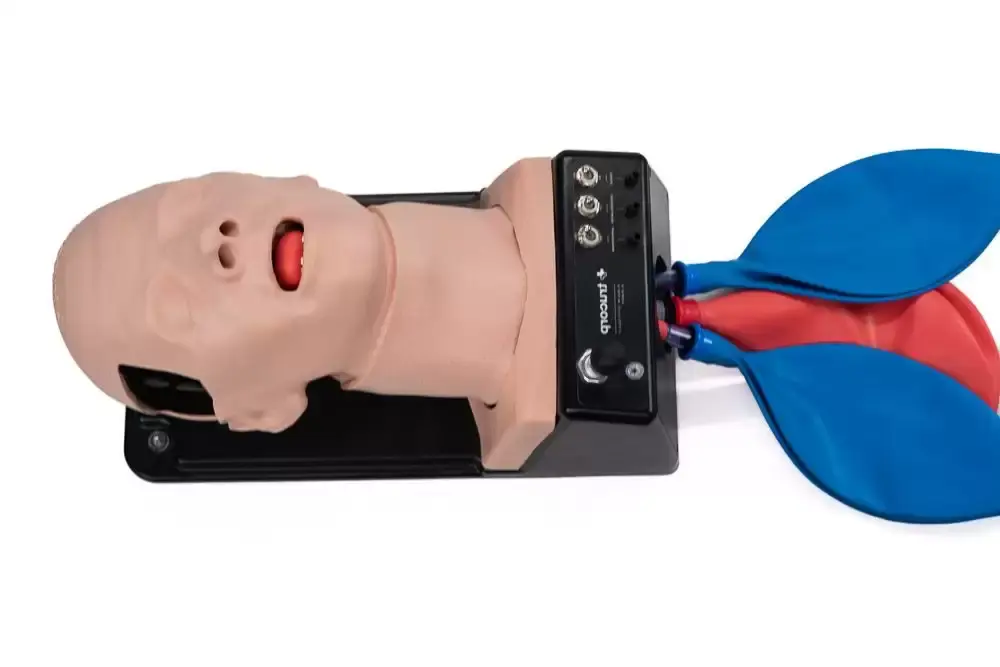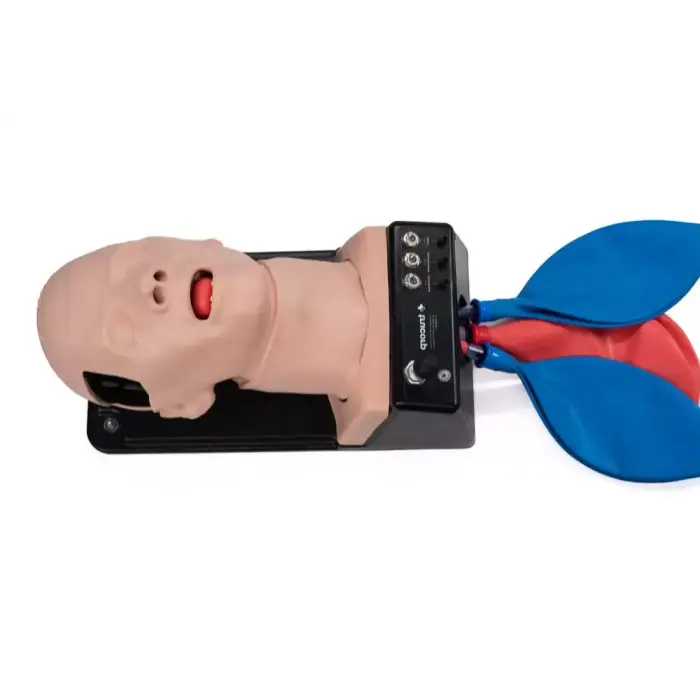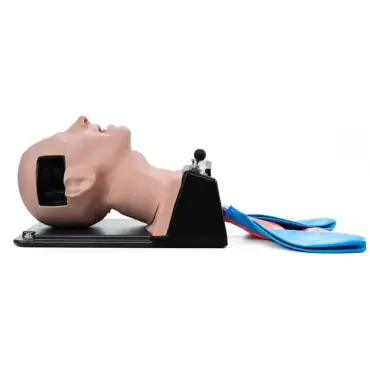AirSim Difficult Airway
The AirSim Difficult Airway has been designed to improve management of the unanticipated difficult intubation in accordance with the Difficult Airway Society guidelines.
Model Features
Difficult Airway
The internal airway has an enlarged tongue, swollen posterior cartilages and an elongated epiglottis to provide a challenging airway management user experience.
Laryngospasm
Adjustable from normal to complete airway obstruction.
Sudden closure of the vocal cords can be simulated.
Upon successful user action, laryngospasm can be mechanically reversed to provide positive feedback
Displaced larynx
Ability to displace the larynx into a more anterior position to make visualisation of the vocal cords more challenging.
Adjustable to provide various levels of difficulty.
Tongue Edema
The tongue can be swollen to simulate various degrees of tongue angioedema.
Receding / protruding Mandible
Various degrees of malocclusion, one mandibular variant and two maxillary variants.
Overbite and underbite features simulated
Trismus
Ability to grossly restrict mouth opening to make insertion of airway devices more challenging
Neck lock / Head rotation restriction
Ability to simulate cervical arthropathy through restricting the range of motion of cervical spine
Neck lock / Head rotation restriction
Simulate needle and surgical cricothyroidotomy and percutaneous tracheostomy.
Easy identification of sternal notch, tracheal rings & cricoid and laryngeal cartilages
Interchangeable larynx allows quick and easy repeated use
Wraparound replaceable neck skin rotates for 10-15 incisions
- Quantitative unit
- ks

AirSim Difficult Airway







